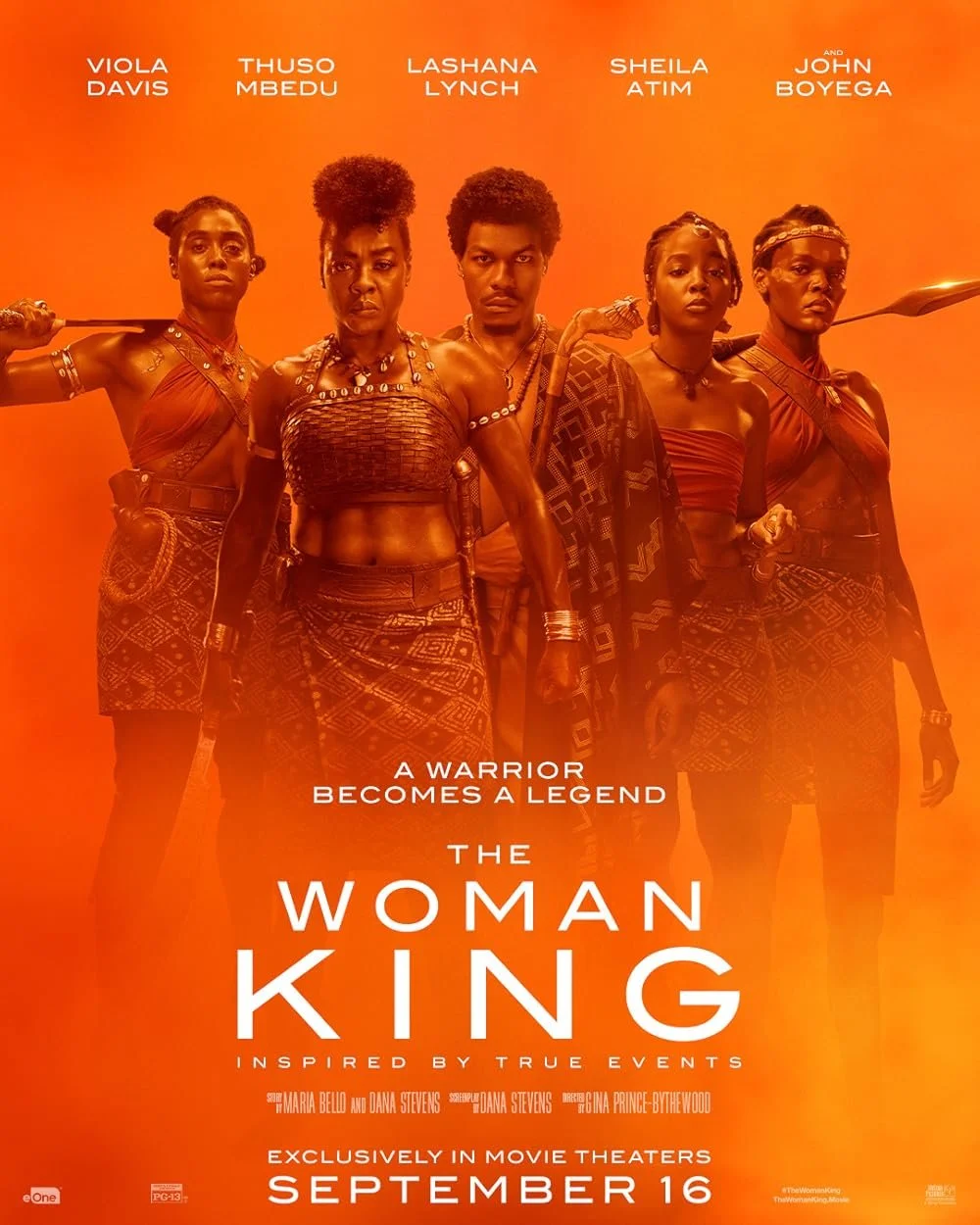08. The Woman King
Explore the material from our latest topic: stereotypical/iconic representations of Black women. Your task is to watch television show (1-2 episodes) or film with an all-black (or majority black) female cast and make note of the portrayal of the cast members/characters.
Spoilers and TW: Discussions of rape, sexual assault, abandonment, and racism.
I don’t really watch movies; it’s not because I don’t enjoy them. For this prompt, I wanted to seek out a female-centered story, and after a quick Google search, I came across The Woman King. Not every film with a majority female cast is a female-centered story. The 2022 standalone film features big Hollywood names such as Viola Davis, Lashana Lynch, and Sheila Atim. Non-franchise historical action films are rare in Hollywood. Even rarer: a Black female standalone historical action film. It grossed $19 million on its opening weekend, surpassing estimations by a cool $7 million.
The story is inspired by true events about the fierce female warriors, the Agojie, of the Kingdom of Dahomey and weaves together themes of motherhood, tradition, trauma, relationships to men, and femininity. To just name a few. The female characters in this movie are portrayed as women should be—complex, multidimensional, and multifaceted. The portrayal of Black women is based in organic storytelling and realistic character arcs. The characters have push and pull within themselves and in their relationships with others, as seen by the several conflicts between warriors, between General and King, and even men and women. The Agojie women make mistakes and rely on sisterhood for strength, wisdom, and aid. It was inspiring, refreshing. I won’t spoil the movie or make you sit through a synopsis, but I do encourage you to watch it. Aesthetically beautiful, poignant, and captivating, I have found one of my new favorite movies.
General Nanisca, played by Viola Davis, is one of the two main characters. She is dedicated, deadly, and wickedly intelligent; she best aligns with the “Sapphire” icon. It is imperative to note the abstinence culture of the female warriors. Yes, the women are dedicated to serving their king. They are also dedicated to honoring themselves and their bodies. Therefore, they choose abstinence and singleness.
Don’t be mistaken; this choice is undeniably feminist. But General Nanisca’s fierce loyalty to her king and her choice of abstinence echoes traits of the “Mammy” icon. Nanisca, the woman, also has secrets. Nanisca leads the Agojie with precision out of fear for her autonomy. After being repeatedly raped by the enemy tribe in her youth, Nanisca shamefully gives birth to a daughter and abandons her. The Agojie cannot have sexual relations, let alone children.
However, there is a sense of empathy towards victims we are unfamiliar with in Western culture. Nanisca is not shunned. She is met with kindness and understanding by her sisters. This is consistent throughout the movie and apparent in all Agojie relationships. General Nanisca ascends to title of Kpojito, or The Woman King, when she learns to embrace herself as Mother and Commander. The Woman King grants the space for women to be portrayed in complex ideas, because it is situated in a different time and geological space. Eastern culture is the antithesis of Western, evidenced by the slave trade plot line. This allows audiences to more easily grasp socially contradictory practices. This is why The Woman King was created—to challenge Western viewpoints of Black icons vs. real Black women.
Madeline’s Weekly Favorites
In no particular order and for no particular reason.


